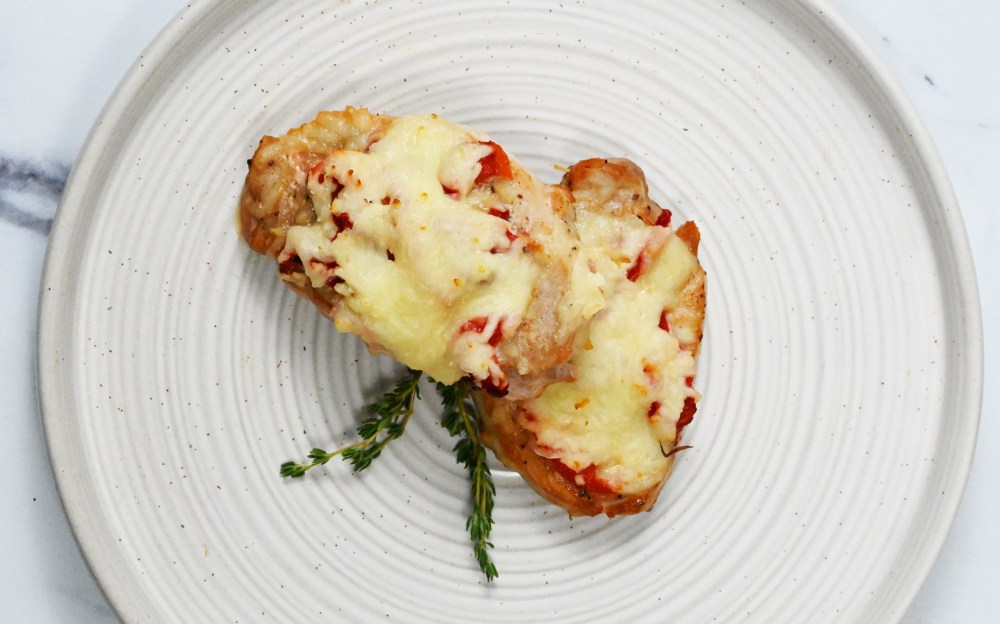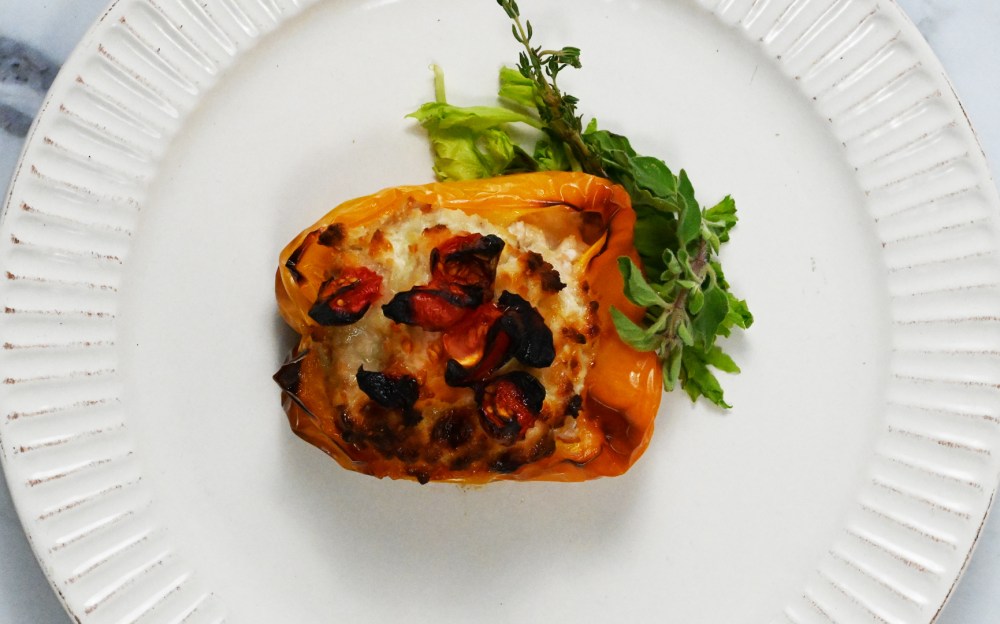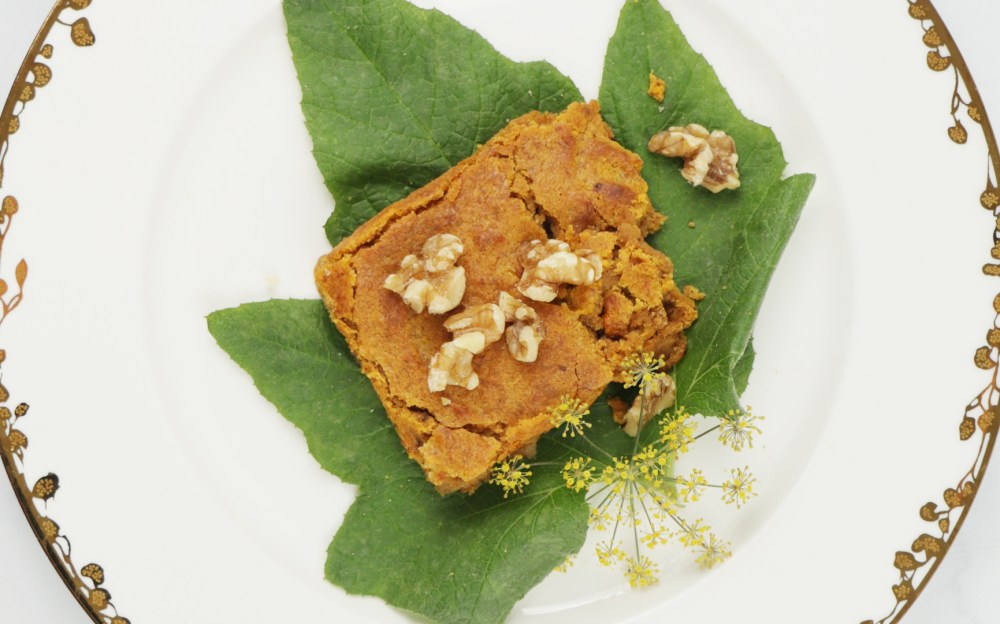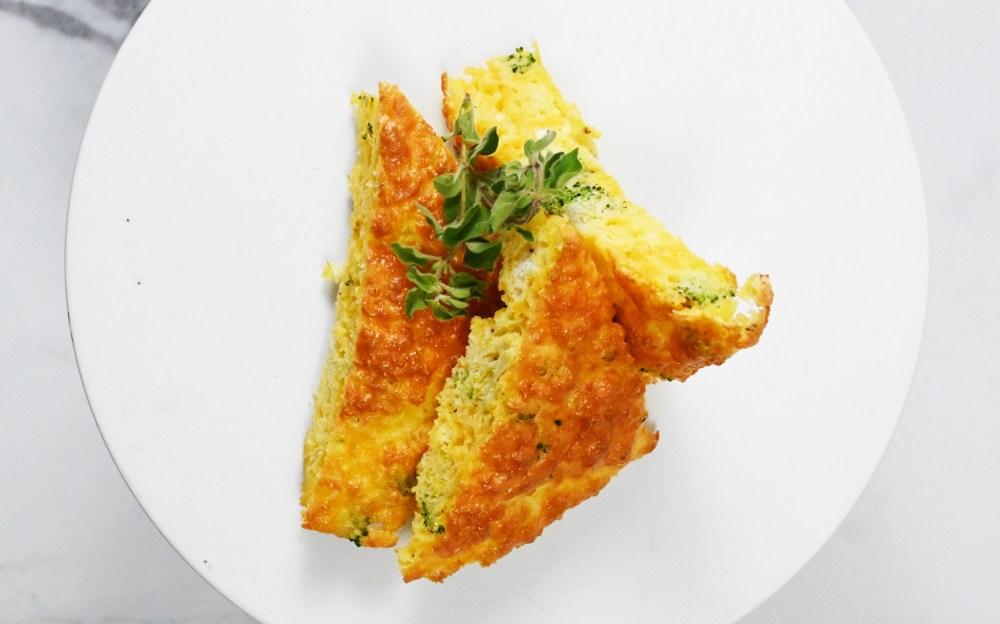Instructions
- Heat a medium-sized pot over high heat. Add half the olive oil and 6 ounces grass-fed ground beef.6 ounces grass-fed ground beef, 1 tablespoon extra virgin olive oil
- Once ground beef is cooked thoroughly, stir in ½ cup tomato sauce. Cook mixture for 2 to 5 minutes and remove from heat when done.1 tablespoon extra virgin olive oil, 6 ounces grass-fed ground beef
- Drain 8 ounces shirataki spaghetti noodles.8 ounces shirataki spaghetti noodles
- Heat a medium-sized pan over medium-low heat.
- Add the remaining olive oil and ¼ onion. Sauté for 5 minutes or until onions are slightly tender.1 tablespoon extra virgin olive oil, ¼ onion
- Add shirataki noodles to onions and turn heat to medium-high. Sauté noodles 5 to 7 minutes, stirring continuously. Add salt to taste.8 ounces shirataki spaghetti noodles, Sea salt and pepper to taste
- Remove from heat and quickly add butter. Mix until butter is completely melted and thoroughly combined.1 tablespoon butter
- Plate noodles, top with sauce, and garnish with Fresh parsley to taste and grated Parmesan cheese to taste. Add Sea salt and pepper to taste.Fresh parsley to taste, Sea salt and pepper to taste, Parmesan cheese to taste
- Serve immediately.
Are you craving a comforting bowl of spaghetti but following a ketogenic diet?
This Keto Spaghetti Recipe is a low-carb, gluten-free alternative to traditional pasta options. Made with shirataki noodles, grass-fed ground beef, and a savory tomato sauce, this dish is packed with flavor and nutrients while keeping the carb count in check.
Why you’ll love this keto recipe
This Keto Spaghetti Recipe is the perfect low-carb alternative to traditional pasta dishes. It’s quick and easy to make, taking only 20 minutes from start to finish.
This dish is packed with flavors thanks to the low-carb spaghetti sauce with ground beef, fragrant onions, and a touch of butter. Fresh parsley and grated Parmesan add the perfect finishing touches.
This recipe is not only keto-friendly but also gluten-free, making it suitable for those with gluten sensitivities or celiac disease.
It’s a satisfying meal that the whole family will enjoy, whether they’re following a keto diet or not.
What’s in Keto Spaghetti?
The star of this dish is the shirataki spaghetti noodles. Made from the konjac plant, these noodles are low in carbohydrates, with about three net carbs per seven-ounce bag, making them an excellent choice for those on a ketogenic diet.
“Shirataki noodles have no calories as they’re made of fiber, so you don’t have to worry about them affecting your keto plan at all,” says Dr. Berg
Shirataki noodles are a versatile pasta substitute with a neutral taste that will take on the flavors of any sauce you choose.
This keto-friendly pasta alternative is a rich source of glucomannan fiber, a water-soluble polysaccharide that can help promote feelings of fullness, aid digestion, and support weight loss.
Research published in Obesity Medicine found “a significant reduction in body weight following glucomannan consumption in overweight and obese adults.”
The savory meat sauce is made with grass-fed ground beef, olive oil, low-carb tomato sauce, and onion. These ingredients provide a good balance of healthy fats, protein, and nutrients, all essential components of a nutritious keto diet.
Chopped parsley and salty Parmesan cheese top off this dish perfectly, adding a burst of flavor and freshness.
What to serve with Keto Spaghetti
This Keto Spaghetti dish is a complete meal on its own, but if you’re looking for some keto-friendly side dishes to pair it with, there are plenty of low-carb options to choose from.
Here are some ideas of what to serve with Keto Spaghetti.
Keto Greek Salad
This crisp and refreshing Keto Greek Salad tossed in a tangy Red Wine Vinaigrette combines a variety of nutrient-dense produce, perfectly complementing the rich flavors of this spaghetti dish.
This salad is packed with fiber and a variety of phytonutrients that help support digestion and promote overall health and well-being.
Keto Garlic and Cheese Breadsticks
Made with just a few simple ingredients, including egg, almond flour, mozzarella cheese, grated parmesan cheese, and garlic powder, these savory Keto Garlic and Cheese Breadsticks make a quick and easy side dish.
Perfect for soaking up any leftover keto spaghetti sauce, they allow you to savor every bite while keeping you in fat-burning mode.
Chicken Caesar Vinaigrette Salad
This simple Chicken Caesar Vinaigrette Salad is a perfect keto-friendly side dish for your low-carb spaghetti.
The crisp romaine lettuce, tender chicken, and zesty vinaigrette dressing create a light and refreshing contrast to the rich and savory spaghetti sauce.
What’s more, the added fat and protein from olive oil and chicken will help keep you feeling full and satisfied.
Keto Oven Roasted Vegetables
These Keto Oven Roasted Vegetables add a colorful medley of low-carb veggies roasted to perfection, adding nutrients and fiber to your meal.
Keto Rolls
To get the full effect of an Italian bistro, try making these delicious and low-carb Keto Rolls.
To take these rolls to the next level, mix roasted garlic, chopped oregano, basil, or Italian seasoning with room-temperature grass-fed butter to make a rich, high-fat spread. Enjoy the buttery, garlicky goodness with every bite!
Storing and reheating tips
If you have leftovers, store the spaghetti and sauce separately in airtight containers in the refrigerator for up to three days.
To reheat, bake the noodles and sauce together in an oven-safe dish at 350 degrees F / 177 degrees C, stirring occasionally, until heated through.
Alternatively, you can reheat them in a pan on the stove over medium heat, adding a splash of water or broth if needed to thin the sauce.
Final thoughts
This Keto Spaghetti Recipe proves that you don’t have to give up your favorite comfort foods when following a low-carb lifestyle.
With a few simple ingredients, you can enjoy a delicious and satisfying Italian meal without the added carbs and blood sugar fluctuations.
Whether you’re a long-time keto devotee or just starting your journey, this easy recipe is sure to become a favorite.
FAQ
1. Can you eat spaghetti on a keto diet?
Traditional spaghetti made from wheat flour is high in carbohydrates and unsuitable for a keto diet.
However, you can enjoy a keto-friendly version of spaghetti by using low-carb alternatives like shirataki noodles or roasted spaghetti squash noodles.
2. What kind of spaghetti is keto-friendly?
Shirataki noodles, made from the konjac plant, are very low in carbs, making them an excellent choice for those following keto.
Other keto-friendly pasta alternatives include zucchini noodles, also known as zoodles, spaghetti squash, or kelp noodles.
3. Is Keto Spaghetti gluten-free?
Yes, this Keto Spaghetti Recipe is gluten-free as it uses shirataki noodles made from konjac instead of traditional wheat-based pasta.
4. How many carbs are in Keto Spaghetti?
This Keto Spaghetti Recipe contains around seven grams of carbohydrates per serving, making it an exceptionally low-carb option compared to traditional pasta dishes.
5. What is a good side to have with Keto Spaghetti?
Various keto-friendly side dishes complement this Keto Spaghetti dish. These include Keto Greek Salad, Keto Garlic and Cheese Breadsticks, and Keto Oven-Roasted Vegetables.















Rate This Recipe